Day 1 of a three day long weekend of Spring Migration tours on the North Norfolk coast. After a cloudy morning we had a brief spell of light rain through the middle of the day, which thankfully passed over while we were having lunch, before it brightened up in the afternoon, although there was a chill to the light NE wind all day. We made our way east along the coast this morning.
There has been a Great Spotted Cuckoo at Weybourne Camp for over a week now. A rare visitor from southern Europe, it is a young bird which overshot on its first return journey north from Africa and ended up in Norfolk. It can normally be viewed from Muckleburgh Hill, as the Camp itself is private land, so we headed over there first thing to see if we could see it.
As we walked in through the trees there were lots of warblers singing – Blackcaps and Chiffchaffs. A Common Whitethroat was songflighting from the top of the hedge. We watched three Lesser Whitethroats chasing each other round the bushes, with one perching up in the top of a hawthorn briefly. A Garden Warbler was singing on the front side of Muckleburgh from deep in the blackthorn and we had a quick view of it as it flew across.
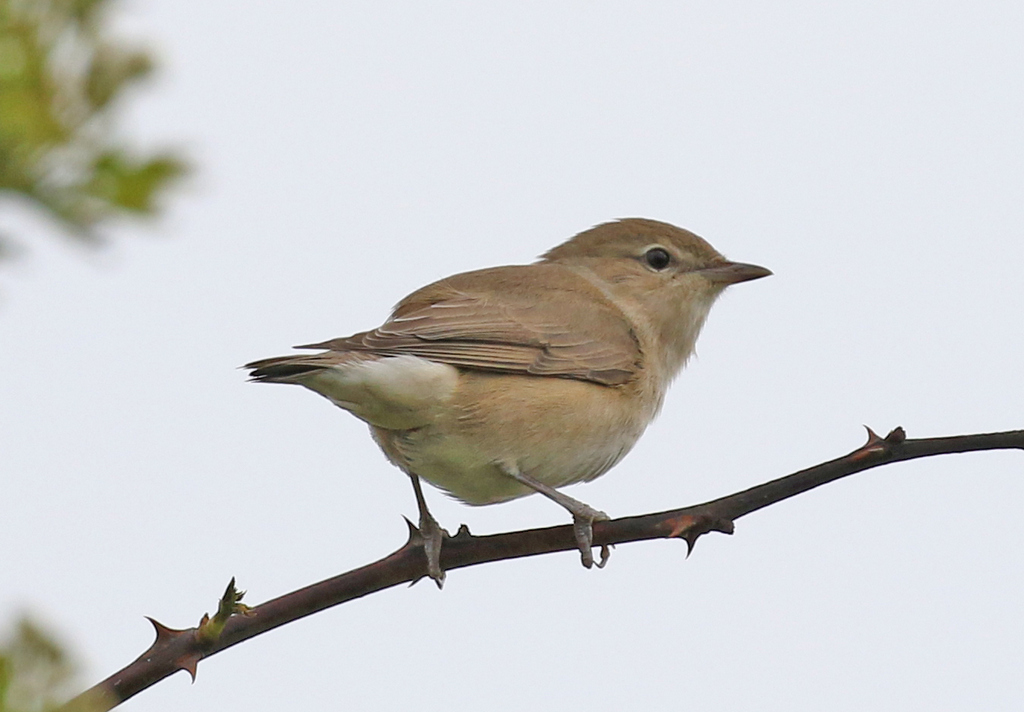
There were a few people gathered looking for the Great Spotted Cuckoo but there was no sign at first, as someone was walking about in the trees out on Weybourne Camp where it had been seen earlier. Eventually, when the disturbance ceased, the Great Spotted Cuckoo flew out and landed on the brambles in the distance over by the coast. It was rather distant and there was already a bit of heat haze despite the cloud, so it was hard to see at first unless you knew where it was. Then it turned and its pale underparts caught the light and it was much easier to see. We all had a look at it through the scope before it dropped down behind the brambles and disappeared.
We decided to have a walk round the hillside bushes. A male Linnet was singing from the top of the gorse just behind us, already getting pinkish-red on the breast. A pair of Yellowhammers flew over calling and dropped into a bush, the male perching up on the outer edge briefly.
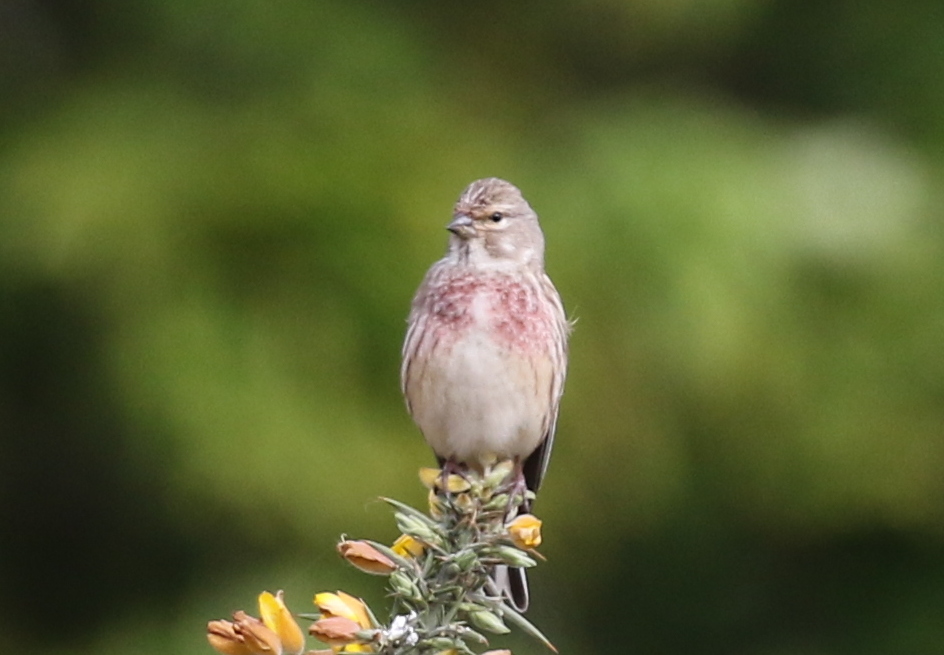
A Willow Warbler was singing but from somewhere deep in the trees, its lovely descending scale a real sound of spring. A Chiffchaff showed itself much better, feeding low down on the outside of the bushes and we could even see it had been ringed. A Lesser Whitethroat was singing its distinctive rattle and when we got back to where we had heard the Garden Warbler earlier it was still singing. We could see it moving through the blackthorn, and it showed itself briefly. There had been a Wood Warbler in the trees on the other side yesterday, so we stopped to listen but there was no sign of it today.
We moved on to Kelling. As we parked in the village, a Greenfinch was singing from the treetops. A Common Buzzard was being chased by a Rook which was then joined in its efforts by a Jackdaw. A pair of Swallows were perched on the wires as we walked underneath.

Walking down the lane towards the coast, the bushes were quieter than normal. A couple of Blackcaps were singing in the hedges down towards the copse, but we could hear Lesser Whitethroat and Common Whitethroat more distantly off across the field. We stopped by the gate overlooking the Water Meadow, but there were no Yellow Wagtails with the cows today.
As we looked over the brambles, we could see a Wood Sandpiper on the edge of the pool on the Water Meadow, so we walked on to the track at the end where we could get a better view of it in the scope. We could see its white-spangled upperparts and clear pale supercilium. Wood Sandpiper are spring migrants, passing through here in small numbers on their way north to Scandinavia in May, so they are always nice to see.
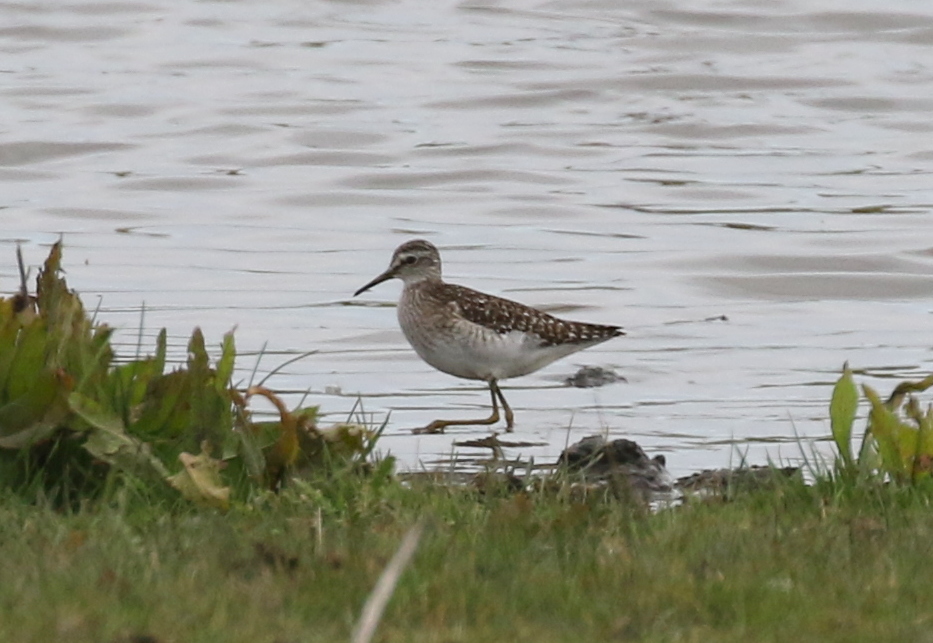
There were also two Common Sandpipers bobbing round the muddy margins of the pool. Four Whimbrel flew west calling over towards the coast. The pair of Egyptian Geese have two goslings and the male tried to show off his courage by chasing off a harmless pair of Gadwall.
There were lots of Sand Martins feeding low over the water, hawking for insects, and more were perching on the wires, preening. They breed in the sandy cliffs along the coast both west and east of here. A Reed Bunting was singing from the brambles behind us and we could see lots of Brown Hares in the field up beyond the Water Meadow.
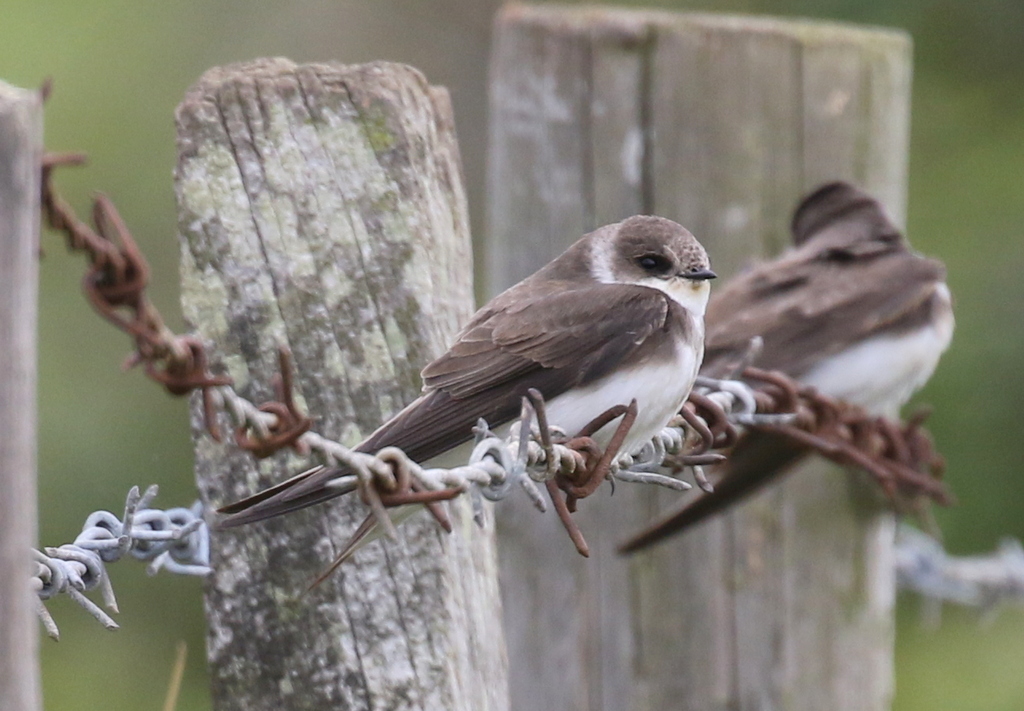
There had apparently been two Wheatears on the Quags earlier, so we walked round there to look for them. We couldn’t find them now, so they had possibly moved on already. As we walked up the hill beyond, behind the beach, we could see the Great White Egret which had been reported at Salthouse, away in the distance. Its long white neck was sticking out of one of the ditches and through the scope we could see its dagger-shaped yellow bill.
A male Stonechat was perched in the bushes down towards the beach, and further on we found the female on the fence. We did find a couple of Wheatears around the gun emplacements, more migrants stopping off on their way north, but with quite a few along the coast today they may not have been the ones which were down on the Quags earlier. We had a good look at the female through the scope, perched on the bunkers and feeding down on the short grass. Meadow Pipits and Skylarks were singing all around us, always great to hear.
With grey clouds building to the south, we decided it would be prudent to walk back. Two Avocets had dropped in on the Water Meadow pool now to feed. Two Red-legged Partridges were hiding in the winter wheat just the other side and when we got back to the gate by the copse we could see a Grey Partridge in the field beyond – nice to see the two species in quick succession to compare them. It was starting to spit with rain now, so we headed back to the minibus.
It was time for lunch, so we headed back west to Cley. On our way, we had a quick look from the Beach Road at Salthouse, but there was no sign of the Great White Egret in the ditches here now. After a quick stop at the NWT Visitor Centre to use the facilities, we drove down to Cley Coastguards and had lunch in the shelter, out of the rain. We got distracted a couple of times looking at the sea. A couple of Sandwich Terns were plunge diving offshore and then two Little Terns flew west. Further out, two Gannets flew the other way. Five Common Scoters were swimming and diving out on the sea, and we had a look at them in the scope, lingering winter visitors.
While we were eating, the rain stopped and it started to brighten up. We noticed a Wheatear on the pillbox further along the beach and then found another two on the fence posts by the Eye Field, including a smart male. They worked their way along the edge of the field past us. A Skylark was feeding on the short grass in the overflow car park right next to us while we were watching the Wheatears.
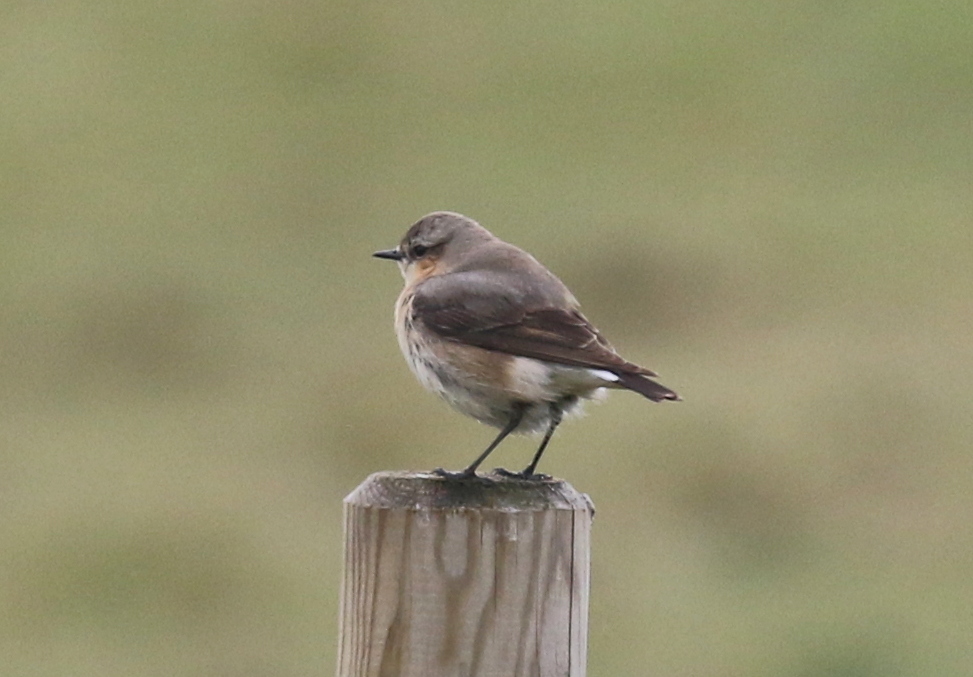
While we were eating, we had seen three Golden Plovers circling round over the Eye Field. They had landed in the grass, and now we could see them just beyond the fence. One was looking very smart with a dark face and belly, a ‘northern’ male. A Marsh Harrier circled over the grass behind the beach away to the west.

After lunch, we drove back round and parked at Walsey Hills. There were several Common Pochard on Snipes Marsh, including a female with two ducklings. They are rare breeders here so it is always good to see evidence of confirmed breeding.
As we walked up the East Bank, we could hear several Reed Warblers singing, but they were keeping well tucked down in the reeds. A Bearded Tit was ‘pinging’ and we turned to see it climbing up into the top of the reeds on the edge of a channel. It was a juvenile, so presumably there was a family party here. A couple of Sedge Warblers flew across the channel and we could see them in the bottom of the reeds on the other side. Further along, we found another Reed Warbler in the ditch the other side of the bank, perched on the reeds singing where it was much easier to see.

There was a small group Black-tailed Godwits and a single Dunlin with a black belly patch feeding out on Pope’s Marsh, so we had a look at them through the scope. Further up on the mud by the Serpentine, we could see a Little Ringed Plover. We had a quick look at it from here and it was good that we did because by time we had walked up there, it had disappeared. There were a few Shoveler and Teal around the Serpentine.
Up at Arnold’s Marsh, we found a few more waders. As well as another small group of Black-tailed Godwits, there were several Bar-tailed Godwits over towards the back. One was mostly in rusty breeding plumage, so we had a look at it through the scope and could see the rusty colour extended down under the tail. There were a few Curlew here too and a Ringed Plover flew in and landed on the stony island, next to a Sandwich Tern. Another Wheatear was hopping around on the saltmarsh at the front.
It was decidedly cool in the shelter overlooking Arnold’s, with the cool easterly breeze having picked up a touch since the rain earlier. It was much nicer round the back in the sunshine, out of the wind. Before everyone got too comfortable, we decided to walk back. A drake Wigeon on Pope’s Pool was a late lingering winter visitor – most of the Wigeon which spent the winter here have already left on their way back to Russia to breed.
We had a quick walk down to the pool on the Iron Road. There were a few waders on here today, including another Wood Sandpiper and three Common Sandpipers. A Jack Snipe was more of a surprise. It was hiding in the vegetation at first, and we could just see it creeping around, before it eventually came out a little more, and we could see it bouncing up and down.
There were lots of Pied Wagtails on the bare mud around the pool and in with them we could see three paler ones, with silvery grey backs – White Wagtails from the continent. A shrill call alerted us to a bright male Yellow Wagtail which flew in and landed at the feet of one of the cows in front of us. It didn’t stop long and almost immediately was off again and flew off west.
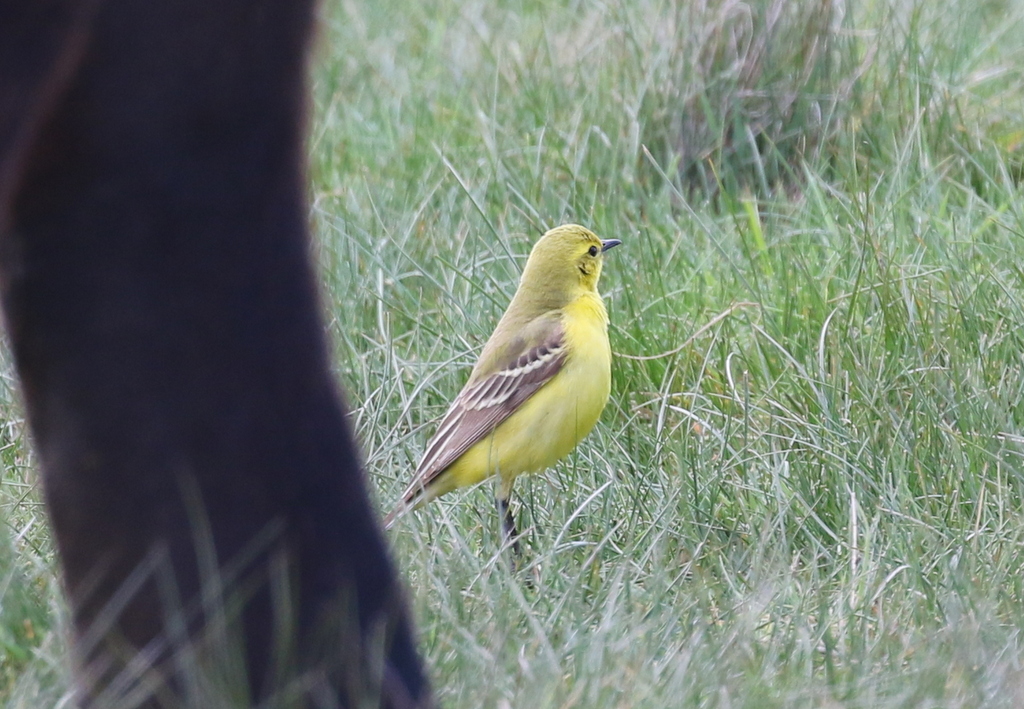
We still had time for one last stop on our way back west, at Stiffkey Fen. As we walked down the path by the road, two male Marsh Harriers quartered the fields. There were more warblers singing here – Blackcap in the trees, and Lesser Whitethroat and Sedge Warbler along the bank of the river the other side.
Up on the seawall, a pair of Avocets and several Shelduck were down in the harbour channel beyond. There were lots of Brent Geese still out on the saltmarsh in the harbour. They should be heading off soon now, on their way up to Siberia for the breeding season. We could see the seals too, distantly out on the sandbars beyond Blakeney Point.
There were a few waders still on the Fen – five Black-tailed Godwits, including one moulting into breeding plumage which gave a nice contrast to the rusty Bar-tailed Godwit we had seen at Cley earlier, as well as several Redshanks. A Green Sandpiper was feeding on the edge of the mud at the back and a Little Ringed Plover was walking around on one of the grassy islands.

Unfortunately it was time to head back. One of the Marsh Harriers was still quartering the field by the path as we made our way back to the minibus, giving us a great view of it. As we drove back into Wells, a Common Cuckoo flew across the road to wrap up the day.
It had been a good first day, with a nice selection of spring migrants. We were looking forward to more tomorrow.
















